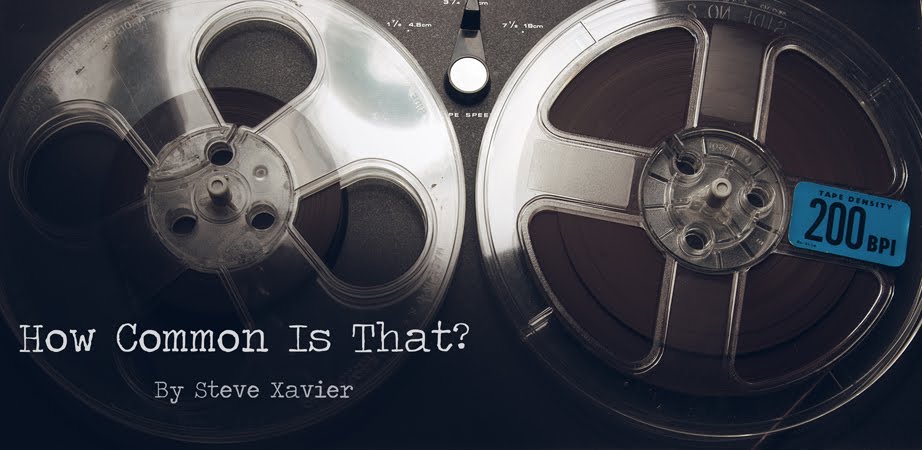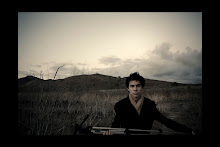Alright, in this post I will describe two recording techniques for drums, that only take up 2 channels, and don't use more than 3 microphones. These techniques are as old as The Beatles, and require a well tuned drum set, and a drummer who can play. (That's important.) Off we go.
Recording drums can be a bit tricky, and when you only have an M-Box mini with 2 XLR inputs, you have to resort to recording multiple tracks. Another way of adding more mics is adding a mixer like a Bheringer 8 channel mixer, and take the main stereo outputs of that into your M-Box, but this still only gives you two channels when you track to Pro Tools, or Logic. If you have both of these programs, you can use my instructions on Syncing Logic to Pro-Tools that I posted in December and get 4 tracks going! It saved me once, that's for sure, and I used one of these techniques I am about to describe to you.
Recorderman Technique (2 mics)
The first technique requires two microphones, of the same make and model. It's called the Recorderman Technique. It's an old technique, but apparently was recently named "Recorderman" after a DIY recording blog. (Kind of like this one....) The type of microphone is up to you, and depends on the sound you want. I like to use AKG 414's for both of these techniques. The U87 is also probably a good choice, but you, in your bedroom, probably can't afford this, so I'll suggest that any condenser mic would do the trick. Hey, use 57's. It's been done before, and worked well.
You will need the two microphones, a long piece of string or an XLR cable and two drumsticks. (Or a tape-measure.) The first microphone will go over the snare. Some say the center of the snare, but it honestly doesn't matter, as long as you're measuring from the same distance. I like the 11 o'clock lug nut on the snare that's closest to the first tom and the hi-hat. Directly above this point is where you will place your first mic, pointing directly at that point. Use your two drumsticks end on end to measure how high it should be from the point on the snare. It doesn't need to be exact right now, we'll move it as needed. Now, sitting on the drum throne, the second mic will go behind your right shoulder, equidistant to the snare. Here's where the string comes in. (Tape measure though, if you want to get all phase-coherent when adding a spot mic on the kick.) Measure 3.75 ft. from the beater of the kick drum to the end of the capsule on mic number two. Make sure the snare is also 2 drumsticks length away from the point you measured on the snare.
Almost there! Take the end of one of your strings and hold it in place with the beater pressed against the kick drum. Run it to the "shoulder" mic, and back down to the point on the snare. Don't start playing cats cradle. Now, with your fingers holding the end of the string to the point on the snare, and your other hand pinching the string where it met the microphone capsule, swing your pinching fingers over to the other microphone to ensure that your mics are both equidistant from the kick and the snare.
These level of these microphones being recorded should yield the same level when the snare drum is hit. Pan the mic above the snare Left, and the other one Right, however much you want, and you should have a pretty nice sounding recording!
Glyn Johns Technique (3 mics)
This technique is named after the famous engineer Glyn Johns, who recorded The Who, The Rolling Stones, The Eagles, The You Name It. He also did Led Zeppelin, so think Led Zeppelin when you think this technique. This one is easier to set up and requires three microphones all of the same make and model. (Some people say this technique is a 4 mic technique, but fail to realize that the 4th microphone is a spot mic.)
Here's how it works; take your first mic, and place it in the same place above the snare as the recorderman technique, measured from the same point 3 or 4 feet. (The further you go, the more room sound you will get.) The second mic will be to the drummers right hand side, a few inches above the floor tom. This will be pointed at the snare, and equidistant from the snare as the first mic. The third mic will then be placed just above the lip of the kick drum, a few inches, and moved back about a foot. This one is hard to measure because of the toms, but it should also be equidistant from the snare. Use an XLR cable or string or a measuring tape to get the distances right.
Again, all three of these mics should have the gain set so that when the snare is hit, it yields the same amplitude on each of them. Pan the mic over the snare to the Left, the mic beside the floor tom to the Right, and leave the mic in front of the kick in the center. If you're using a mixer, use the mixers main L+R outputs to go to your laptop or whatever you're using.
Spot Mics
I've been talking about spot mics here and there throughout this post. Spot mics are basically close microphones to pick up any drum that you want to be able to control in the mix. Usual go-to spot mics are the snare, and the kick drum. If you have the extra channels, just mic those normally. (If you used my measuring tape method on the Recorderman technique, flip the phase of the two mics when using a spot mic on the kick.)
This is a sample of the Glyn Johns technique that I did in a very low budget recording situation. I had 3 small cap condenser MXL 993's, which I summed into two channels with a mixer and recorded the output into Logic. I used a subkick mixed with a Beta 52 on the kick, and a 57 on the snare and ran those to Pro-Tools and synced the two programs to record the four channels, but for the purpose of showing this technique, I took off the spot mics, and you are only hearing the Glyn Johns Technique.
Now go forth and record!
-Steve Xavier




